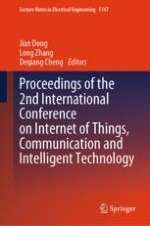This conference discussed the application of communication and IoT engineering in the era of smart technologies from the perspective of disciplinary integration, combining the theory and relevant algorithms of IoT and smart technologies. The book encompasses the entire spectrum of IoT solutions, from IoT to cybersecurity. It explores communication systems, including sixth generation (6G) mobile, D2D and M2M communications. It also focuses on intelligent technologies, especially information systems modeling and simulation. In addition, it explores the areas of pervasive computing, distributed computing, high performance computing, pervasive and mobile computing, and cloud computing.
